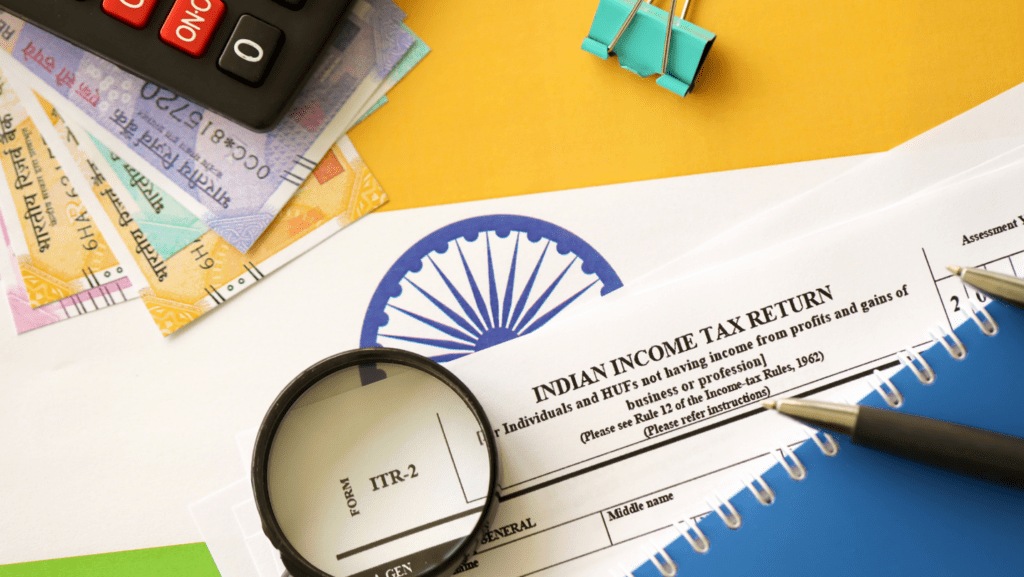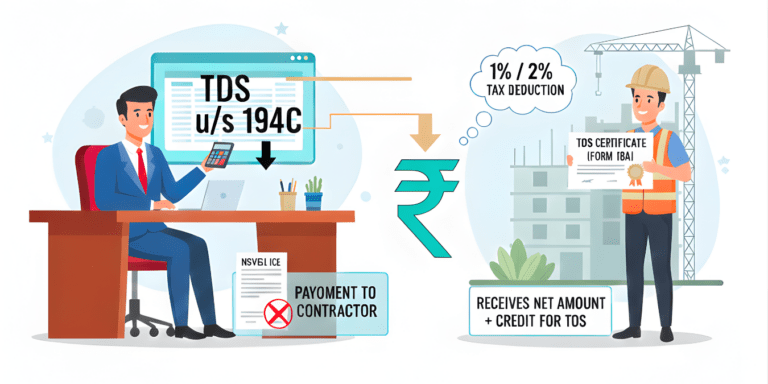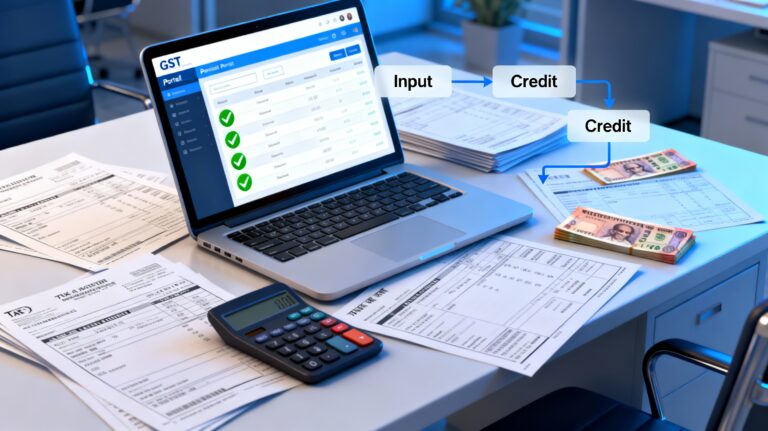
What Happens If You Repay and Take Loans in Cash in 2025? Section 269SS and 269T Explained!
Ever handed over ₹20,000 in cash for a “quick loan” to a friend? What if that single act could wipe out your savings with a 100% tax penalty overnight? In 2025’s tightened net against black money, India’s Sections 269SS and 269T are silent enforcers, banning cash deals on loans, deposits—even property advances. Uncover the shocking exemptions that could save you, the deadly aggregation traps lurking in your wallet, and pro hacks for seamless digital compliance. Dare to peek inside before the taxman knocks?
In India’s fight against black money and tax evasion, Sections 269SS and 269T of the Income Tax Act stand as vigilant guardians against black money and tax evasion. These provisions prohibit acceptance and repayment of loans, deposits, or specified sums of ₹20,000 or more in cash, mandating digital or banking channels for such transactions. As we navigate 2025, with the government’s intensified focus on digital India, understanding these provisions is vital to avoid steep penalties and ensure seamless compliance—especially amid recent reaffirmations in the Finance Act 2025 that emphasize electronic modes and enhanced scrutiny.
Understanding Section 269SS: Restrictions on Accepting Cash Loans and Deposits
Section 269SS, a cornerstone of India’s anti-black money framework, was enacted to eliminate large cash inflows that often escape tax nets. It targets any individual, firm, company, trust, society, or other entity, prohibiting the acceptance of loans, deposits, or specified sums amounting to ₹20,000 or more in cash from another person. This measure, introduced in 1984 and refined over years, aligns with broader goals like demonetization and GST to digitize transactions and reduce undeclared wealth.
From an Indian perspective, where informal lending is common in rural and small business sectors, this section bridges the gap between traditional practices and modern compliance. For instance, a Mumbai-based trader accepting cash from a supplier could unwittingly trigger violations if totals exceed the threshold. In 2025, with rising digital penetration—over 900 million internet users as per recent TRAI reports—this section encourages a shift to traceable methods, curbing evasion that costs the exchequer billions annually.
The rationale is simple yet profound: cash transactions breed opacity, enabling tax dodges and money laundering. By mandating banking channels, the government ensures every rupee is accounted for, supporting initiatives like the Digital India campaign launched in 2015 and bolstered in subsequent budgets.
When Does Section 269SS Apply?
Section 269SS kicks in under specific scenarios, designed to capture both direct and aggregated cash acceptances:
- When a single loan, deposit, or specified sum (such as advances for immovable property transfers) reaches or exceeds ₹20,000 in cash.
- If multiple loans, deposits, or specified sums from the same person aggregate to more than ₹20,000 in cash over time.
- In cases of outstanding unpaid balances where a new cash acceptance pushes the total beyond ₹20,000.
Consider a Delhi real estate developer receiving staggered cash advances for a property deal; if they sum up to ₹25,000, compliance is breached. This aggregation rule, often overlooked, has led to numerous penalties in recent audits, with the Income Tax Department reporting a 15% rise in such detections in FY 2024-25.
Permissible Modes of Payment Under Section 269SS
To comply, transactions must use approved, traceable methods that leave a digital footprint:
- Account payee cheques, ensuring funds go directly to the named recipient.
- Account payee bank drafts, offering security for larger sums.
- Electronic clearing systems like NEFT, RTGS, UPI, and IMPS, which have seen explosive growth—UPI transactions hit 14 billion in August 2025 alone.
- Debit and credit card payments, facilitating seamless business dealings.
These modes exclude physical cash, emphasizing documentation. In 2025, with Rule 6ABBA expanding “other electronic modes” to include advanced fintech solutions like mobile wallets and instant payment apps, compliance is more accessible than ever. For small businesses in tier-2 cities like Jaipur, adopting UPI not only avoids penalties but also integrates with accounting software for real-time tracking.
Exceptions to Section 269SS
Not all cash acceptances fall under the axe; sensible exemptions exist to accommodate genuine needs:
- Transactions involving only agricultural income earners, where no taxable income is at play—vital for India’s vast farming community, contributing 18% to GDP.
- Loans or deposits from government bodies, banking companies, or cooperative banks, as these are inherently regulated and transparent.
These carve-outs prevent undue hardship on low-income groups. For example, a farmer in Punjab borrowing from a rural cooperative in cash below taxable limits remains exempt, preserving rural economies while targeting urban evasion.
Penalties for Non-compliance
Breaching Section 269SS invites severe repercussions under Section 271D: a penalty equaling 100% of the cash amount accepted. This deterrent, unchanged in the Finance Act 2025, underscores the government’s zero-tolerance stance. If a Bengaluru startup accepts ₹50,000 cash investment, it faces a ₹50,000 fine, potentially crippling early-stage operations.
However, penalties aren’t automatic; reasonable cause—like emergencies or banking disruptions—can lead to waivers if proven without malafide intent. Courts have upheld this in cases like sudden medical needs, but documentation is key.
Decoding Section 269T: Rules for Repayment of Loans and Deposits
Complementing Section 269SS, Section 269T focuses on the outflow side, prohibiting cash repayments of loans, deposits, or specified sums of ₹20,000 or more. Introduced to close the loop on cash cycles, it ensures repayments are as transparent as acceptances, preventing the recirculation of black money.
In India's diverse economic fabric, from Kolkata's trading hubs to Chennai's IT corridors, this section affects everyone handling debts. A recent 2025 survey by the Confederation of Indian Industry (CII) revealed that 20% of SMEs still grapple with repayment compliance, highlighting the need for awareness amid digital pushes.
The section's intent is to mirror acceptance rules, creating a symmetrical framework that traces money from entry to exit, aiding investigations into tax fraud.
Key Provisions of Section 269T
Core rules mandate non-cash repayments for amounts at or above ₹20,000:
- Repayments via account payee cheques, bank drafts, or electronic systems like NEFT and UPI.
- Prohibition on cash to maintain audit trails, reducing risks of untraceable funds.
For instance, repaying a ₹30,000 family loan in cash could trigger penalties, even if acceptance was compliant. With 2025's enhanced enforcement, the CBDT has issued guidelines emphasizing digital repayments for all, including NRIs.
Exceptions Under Section 269T
Mirroring 269SS, exemptions include:
- Repayments to government or banking entities, ensuring institutional flexibility.
- Cases involving agricultural income without tax liability, supporting rural livelihoods.
These align with India's agrarian roots, where cash remains prevalent in remote areas lacking banking access.
Penalty for Violation
Under Section 271E, violations attract a 100% penalty on the cash repaid, reaffirmed in 2025 without hikes. This parity with acceptance penalties creates balanced deterrence. Defenses like genuine errors may apply, but proactive compliance is advised.
Specified Sum in Relation to Immovable Property
Both sections extend to "specified sums" tied to immovable property, such as advances for sales or purchases. If ₹20,000 or more, these must use approved modes to prevent real estate—a hotbed for black money—from evading scrutiny.
In 2025, with property registrations surging post-pandemic, this provision gains prominence. A Hyderabad buyer paying cash advance risks penalties, emphasizing the need for bank transfers in deals.
Reporting Requirements and Audit Compliance
Compliance extends beyond transactions to reporting:
- Under Clause 31 of Form 3CD, tax auditors must report transactions falling under Sections 269SS and 269T during tax audits.
- Both the payer and receiver must disclose these transactions during income tax filings to avoid scrutiny and penalties.
- Maintaining meticulous records, such as bank statements and transaction receipts, is critical for compliance and audit readiness.
In 2025, with AI-driven scrutiny by the IT Department, non-reporting spikes penalties by 25% in detected cases.
Practical How-To Steps to Ensure Compliance
Follow these steps for foolproof adherence:
- Always Use Digital Channels: Prefer UPI, NEFT, RTGS, or account payee cheques for loans, deposits, and repayments above ₹20,000.
- Maintain Proper Documentation: Keep copies of payment instruments and bank statements for all transactions over the threshold.
- Keep Track of Outstanding Balances: Combining unpaid loans and new cash transactions can breach limits causing penalties.
- Consult Tax Professionals: For clarity on exceptions and compliances, professional advice is valuable, especially for complex transactions.
- Educate Employees/Business Partners: Ensure all parties involved understand these provisions to avoid inadvertent violations.
Common Mistakes to Avoid
Steer clear of pitfalls like:
- Accepting or repaying cash loans aggregating ₹20,000 or more.
- Ignoring transaction aggregation from the same person over time.
- Failing to report or disclose such transactions properly in tax returns and audits.
- Assuming exceptions apply when they do not.
- Poor record-keeping of digital payments and transactions.
Pro Tips for Businesses and Individuals
Elevate compliance with:
- Use automated accounting software integrated with banking channels to track transactions.
- Regularly reconcile ledger balances with bank statements to spot violations early.
- Document emergencies compelling cash transactions as a legal defense.
- Stay updated on amendments, as 2025 sees enhanced enforcement and clarity on digital payments.
- Set internal limits less than ₹20,000 to create buffer compliance zones.
Latest Amendments and 2025 Updates
The Finance Act 2025 reaffirms 100% penalties, with no hikes. Rule 6ABBA expands electronic modes, including new fintech integrations. Scrutiny intensifies on audit reports, with e-filing mandates tightening.
- The Finance Act 2025 reaffirms the penalty structure at 100% of the cash transaction amount with no increase in penalty percentage.
- Enhanced reporting and digital payment modes expand to cover more electronic transactions under Rule 6ABBA.
- The Income Tax Department is intensifying scrutiny of audit reports and e-filing disclosures concerning Sections 269SS and 269T violations.
Featured Snippet Summary
Section 269SS prohibits accepting loans, deposits, or specified sums of ₹20,000 or more in cash from others, mandating usage of banking or electronic payment methods.
Section 269T restricts repayment of such loans or deposits in cash beyond the ₹20,000 limit. Violations attract a penalty equal to 100% of the transaction amount.
Proper documentation, compliance with digital payment channels, and accurate reporting during tax audits are essential for avoiding penalties in 2025.
Final Thought and Call to Action
With the ongoing crackdown on unaccounted cash, understanding and complying with Sections 269SS and 269T is critical for every individual and business in India. Start by reviewing your current loan and deposit transactions, switch to digital modes wherever possible, and keep detailed records for audit and tax filings. Consult a tax professional to navigate any grey areas or complex cases to safeguard your financial health and reputation.
Take action today to ensure your loan and deposit transactions meet the 2025 compliance standards under Sections 269SS and 269T. This proactive approach can save you from hefty penalties and bring transparency to your financial dealings.

































